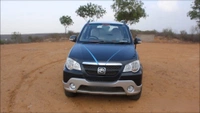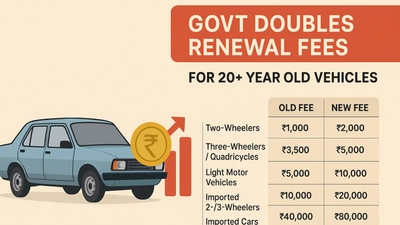
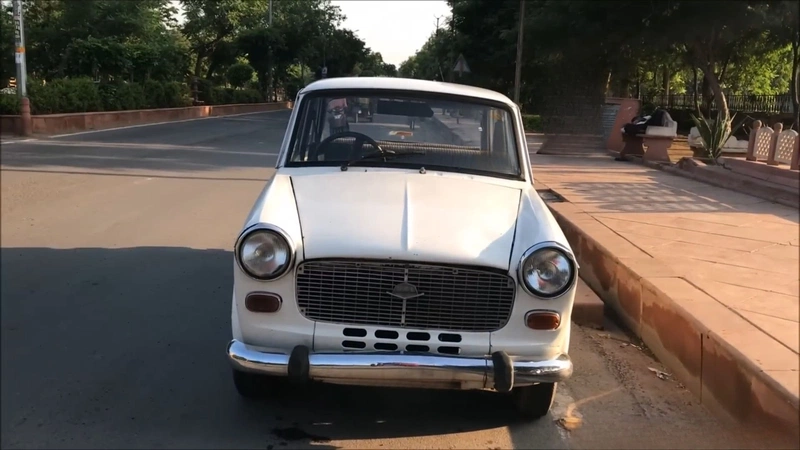

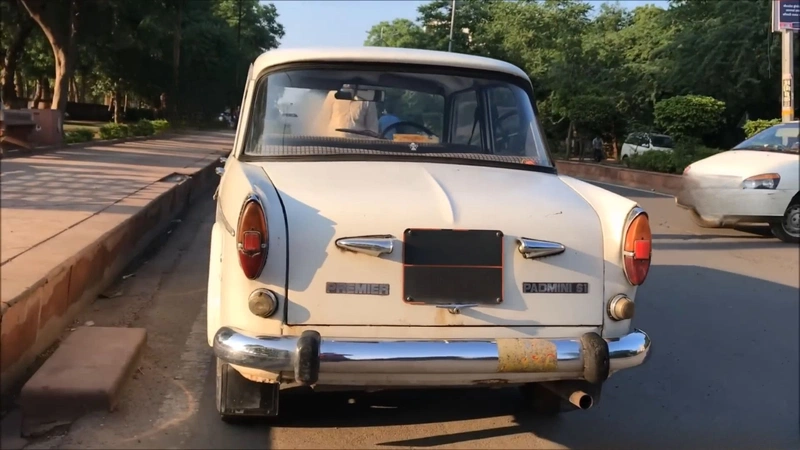

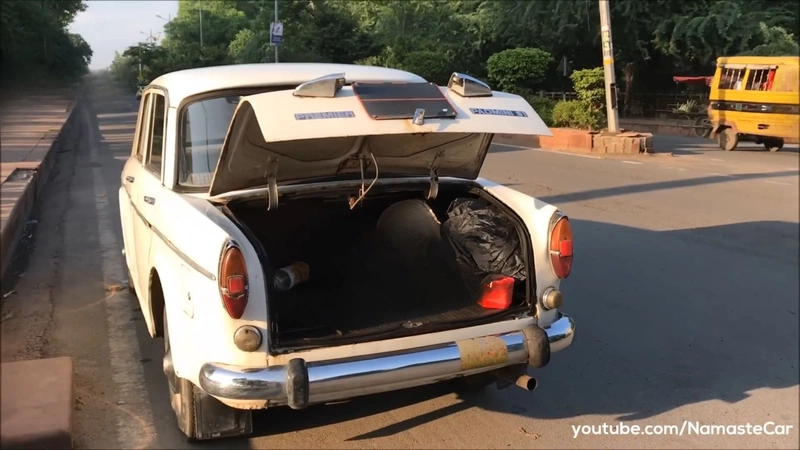
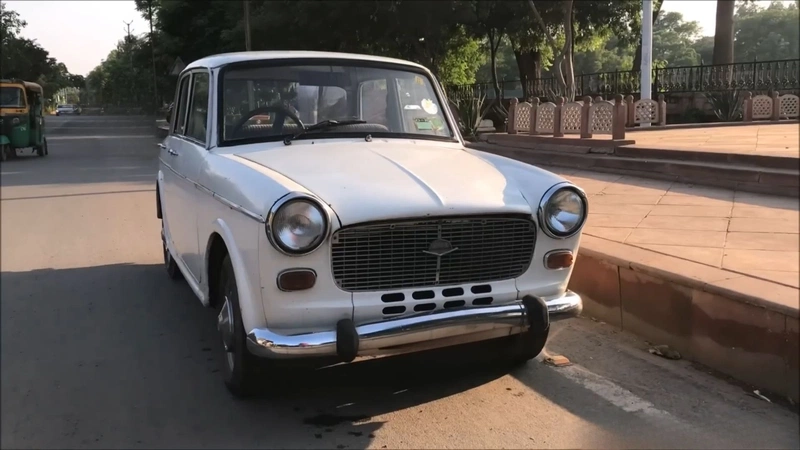

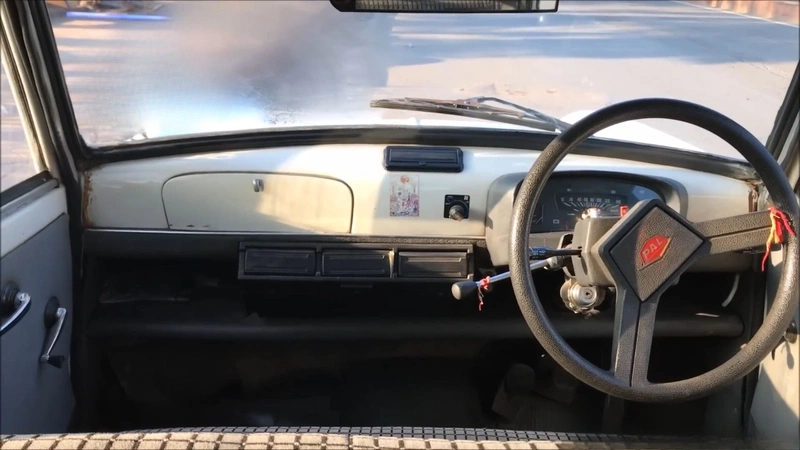

Premier Padmini

The Premier Padmini is a truly iconic and long-discontinued car in India, with production ceasing in 2001. Originally manufactured under license from Fiat by Premier Automobiles Limited, this four-seat saloon achieved immense popularity, especially as the quintessential "Kaali Peeli" taxi in Mumbai. Now exclusively a collector's item or a very old used car, it appeals to enthusiasts and those seeking a piece of automotive history, despite the significant challenges of owning such a vintage vehicle in 2025.
Premier Padmini Variants & Prices
Filter By Fuel type & Transmission type| Variant Details | Ex. Showroom Price | |
|---|---|---|
Padmini Diesel Base ModelTop 1089 cc, Manual, Diesel, 15 kmpl | ₹ 1.95 Lakh* | |
Padmini Std1089 cc, Manual, Petrol, 15 kmpl | ₹ 1.95 Lakh* |
Premier Padmini Key Specs & Features
Pros & Cons of Premier Padmini
Things We Like
- Relatively spacious interior for its size.
- Comfortable ride quality over rough roads.
- Very low acquisition cost for unrestored examples.
- Iconic status and strong nostalgic appeal.
- A true collector's item with increasing value for well-maintained or restored units.
- Simple, robust mechanicals (for its era).
Things We Don't Like
- Outdated technology and comfort features.
- Rust is a common issue due to age.
- Production ceased in 2001; no manufacturer support.
- Extremely challenging to source original spare parts.
- Very basic safety features (no airbags, no ABS).
- Most petrol variants will be affected by the 15-year NCR vehicle ban.
- Poor fuel efficiency and performance compared to modern cars.
- High maintenance demands for a daily driver.
Premier Padmini Overview

The Premier Padmini holds a legendary status in the Indian automotive landscape as a deeply discontinued model. Manufactured by Premier Automobiles Limited (PAL) under license from Fiat, its production ran from 1964 to 2001. Initially marketed as the Fiat 1100 Delight and later as the Premier President before settling on Premier Padmini in 1974, it was a dominant force in the Indian car market, particularly during the 1970s and 80s. It became synonymous with Mumbai's "Kaali Peeli" taxis, with the last Padmini taxi officially phased out in October 2023 due to age regulations.
When new, the Padmini was a symbol of personal mobility for many Indian families and a workhorse for commercial operators. It was valued for its relatively modern looks (compared to the Ambassador), fuel efficiency, and ease of driving. As a used vehicle in 2025, it is no longer a practical daily driver for most. Instead, it appeals almost exclusively to classic car enthusiasts, collectors, or individuals seeking a nostalgic connection to India's automotive past. Ownership involves significant dedication to maintenance, sourcing rare parts, and understanding its limitations compared to modern vehicles.
engine and performance
The Premier Padmini was primarily powered by a 1.1-litre (1089 cc) four-cylinder petrol engine, derived from its Fiat origins. This engine typically produced around 40-47 bhp and 69-71 Nm of torque. It was paired with a 4-speed manual transmission (column-mounted or floor-mounted). A diesel variant (1366 cc) was also introduced later, producing around 45 bhp, but it was less successful.
When considering a used Padmini, a thorough mechanical inspection is critical. Listen for unusual engine noises, smoke from the exhaust, or oil leaks. Check the manual transmission for smooth gear changes, as worn synchros are common in older vehicles. Common issues reported by owners included engine overheating, clutch problems, and electrical issues. The performance was adequate for its era, with a top speed of around 100-110 kmph, but it is significantly slower than any modern car. Fuel efficiency was around 11-15 kmpl.
Ride and Handling
The Premier Padmini was known for its relatively soft and comfortable ride quality, especially over broken Indian roads, thanks to its suspension setup (likely independent front suspension and rear leaf springs). Its compact dimensions (length around 3930 mm) and tight turning radius (around 4.8 meters) made it quite maneuverable in city traffic. However, its handling at higher speeds was not its strong suit, with noticeable body roll and a somewhat vague steering feel (power steering was not standard).
When assessing a used Padmini, listen for suspension noises, and check for excessive play in the steering. The ride comfort, while good for its era, will feel bouncy compared to modern cars. Given its age, worn suspension bushes and components are common, affecting ride and handling.
interior
The interior of the Premier Padmini was functional and relatively spartan by modern standards. It typically featured bench seats (though later S1 models offered bucket seats), a simple dashboard, and a unique left-handed column-mounted gear shifter (though floor-shift variants also existed). Amenities were minimal, with air conditioning being an optional extra in later models. The cabin offered decent space for four occupants.
When evaluating a used Padmini, inspect the upholstery for tears, significant wear, or damage. Check the functionality of basic controls like the fan, wipers, and lights. The instrument cluster was basic, usually with a speedometer and fuel gauge. Owners often report issues like non-working digital clocks (in later models that had them) or rattles. Due to its vintage, many interior components might be worn, cracked, or missing, and sourcing original replacements can be challenging. Restored interiors are highly valued.
Infotainment
The concept of "infotainment" as we know it did not exist for the Premier Padmini. It came with a very basic audio system, typically a simple AM/FM radio. Cassette players might have been aftermarket additions in its later years. There was no provision for USB, auxiliary input, Bluetooth, or touchscreens.
When inspecting a used model, verify if any original or period-correct radio is present and functional. Many Padminis might have had their original audio systems replaced with more modern (though still basic) aftermarket units over the decades. Functionality beyond basic radio reception is unlikely and not expected.
exterior
The exterior design of the Premier Padmini was based on the Fiat 1100, featuring a classic four-door saloon silhouette. Its design was simple, elegant for its time, and recognizable by its rounded lines, prominent grille, and distinctive headlamp and taillamp clusters. Later variants, like the Padmini S1, introduced minor cosmetic updates such as a more modern front grille.
When considering a used Padmini in 2025, the exterior condition is paramount. Expect signs of age, including faded paint, rust (especially in common areas like the wheel arches, sills, and floor pan), and potential bodywork imperfections. Meticulously inspect the chrome elements, which often show pitting or damage. The original lights and badging might be difficult to source, so check their condition. Given its age, a Padmini in good exterior condition often indicates a well-maintained or restored vehicle, which will command a premium.
safety
Safety features in the Premier Padmini were virtually non-existent by modern standards. It lacked airbags, ABS, seatbelt pretensioners, or any form of electronic stability control. The body structure was designed to meet the safety norms of its time, which were far less stringent than today's. Seatbelts were basic lap belts or simple three-point belts in the front.
When inspecting a used Padmini, ensure basic functionalities like working headlights, taillights, turn indicators, and horn. The braking system typically consisted of drum brakes on all four wheels, which require more effort and offer less stopping power than modern disc brakes. Potential buyers must understand that the Padmini offers minimal crash protection and requires a highly defensive driving style in modern traffic.
competition
As a deeply discontinued and vintage model, the Premier Padmini has no direct contemporary competition. When it was new, its primary rivals were the Hindustan Ambassador and the Standard Herald.
On the used market in 2025, it is in a niche category, competing with other classic Indian cars or very old imported vintage vehicles. Its appeal is primarily nostalgic or for restoration projects, rather than as a practical mode of transport. Its main disadvantages are the complete lack of manufacturer support, extreme difficulty in sourcing original spare parts, and very basic safety and comfort features. Furthermore, petrol vehicles older than 15 years are subject to the NCR vehicle ban, meaning most Padminis would be illegal to drive in that region, further limiting their practical use and resale value. However, for a dedicated enthusiast, the Padmini offers a unique driving experience and a tangible connection to India's automotive heritage.
final verdict
The Premier Padmini is far more than just a discontinued car; it is a cultural icon and a piece of India's automotive history. Its production ended in 2001, making any surviving examples at least 24 years old. For the vast majority of car buyers, the Padmini is no longer a viable option for daily commuting due to its age, lack of modern features, safety concerns, and the immense challenge of maintenance and parts availability.
However, for classic car enthusiasts, restorers, and those driven by nostalgia, the Premier Padmini represents a unique opportunity to own a tangible piece of India's past. Its simple mechanicals, while outdated, can be understood and repaired by skilled vintage car mechanics. The driving experience is raw and engaging, a stark contrast to modern, sanitized vehicles. Potential owners must be prepared for a significant commitment in terms of time, effort, and resources for restoration and ongoing maintenance. Furthermore, be aware of regional regulations like the NCR vehicle ban on older petrol cars, which will impact the usability of most Padminis. For the right buyer, the Premier Padmini is not just a car; it's a passion project and a rolling piece of history.
Premier Padmini Specifications & Features
Engine Specifications
| Engine Type | In-Line Engine |
| Displacement | 1089 cc |
| Max Power | 40 PS @ 5000 rpm |
| Max Torque | 69 Nm @ 3000 rpm |
| No of Cylinders | 4 |
| Valves Per Cylinder | 2 |
| Turbo Charger | |
| Transmission Type | Manual |
| Gearbox | 4-Speed |
| Engine Displacement | 1089 cc |
| Top Speed | 102 kmph |
| Fuel Supply System | 1 32 BIC IBX carb |
| Super Charge |
Performance Specifications
| Acceleration | 31 |
Fuel Specifications
| Fuel Type | Diesel |
| Fuel Tank Capacity | 38 Litres |
| City Mileage | 10 kmpl |
| Diesel Mileage ARAI | 15 kmpl |
| Diesel Fuel Tank Capacity | 38 Litres |
Dimensions
| Length | 3930 mm |
| Width | 1460 mm |
| Height | 1468 mm |
| Ground Clearance | 128 mm |
| Wheelbase | 2340 mm |
| Kerb Weight | 895 |
| Gross Weight | 1270 kg |
| Body Type | Hatchback |
Wheels & Tires
| Tyre Size | 185/70 R14 |
| Tyre Type | Radial |
| Wheel Size | 14 Inch |
| Front Track | 1230 mm |
| Rear Track | 1223 mm |
Suspension, Brakes & Steering
| Steering Type | Power |
| Turning Radius | 6 m |
| Front Brake Type | Drum |
| Rear Brake Type | Drum |
| Steering Gear Type | worm & roller |
Interior Specifications
| Seating Capacity | 5 |
| No of Doors | 4 |
Premier Padmini FAQs
Q) Is the Premier Padmini available in petrol, CNG, electric or diesel engines?
A) The Padmini is currently available with Petrol and Diesel engines.
Q) What is the current ex-showroom price of the Premier Padmini?
A) The current ex-showroom prices start at 1.95 Lakh and go up to 1.95 Lakh, depending on the variant.
Q) How many variants does the Padmini come in, and what are their names?
A) The Premier Padmini is available in 2 variants: Diesel and Std. It offers manual transmission options.
Q) What is the engine capacity, power, and torque of the Padmini?
A) It has a 1089 cc engine that produces 40 PS and 69 Nm of torque.










